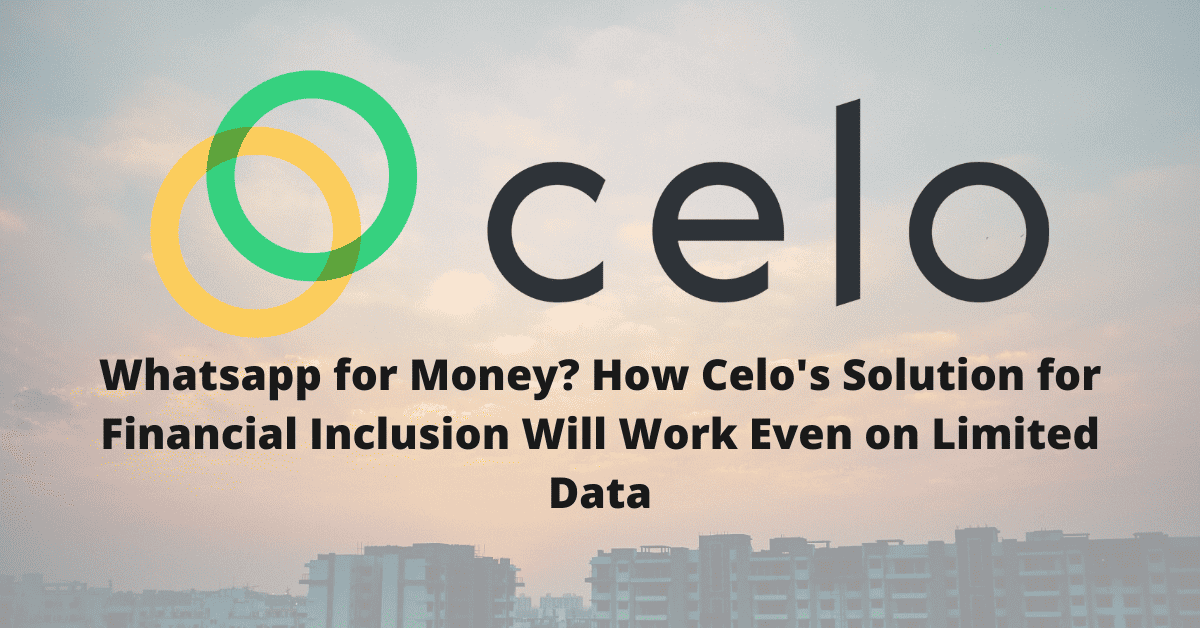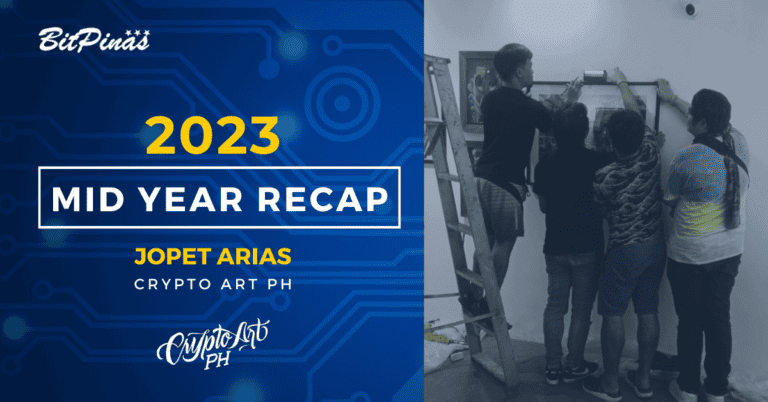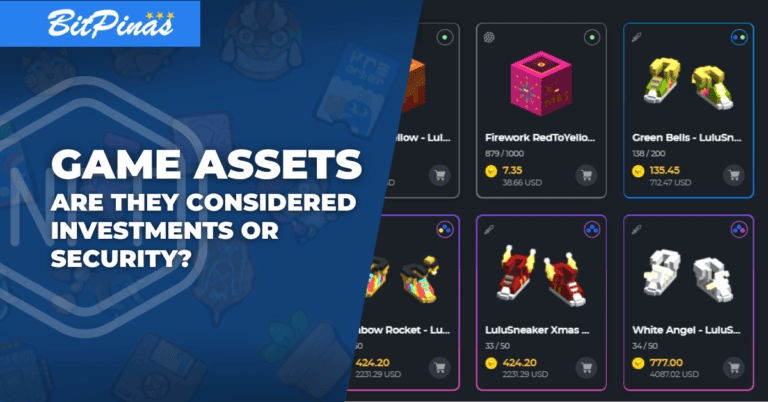Whatsapp for Money? Celo’s Solution for Financial Inclusion Will Work Even on Limited Data
Just as you can send messages via Whatsapp to any person in the world for free, Celo aims to be the tool to be used for free remittances, globally.

April 28, 2020 – The CEO of investment firm PolyChain Capital recently called Celo the “WhatsApp for Money”. It’s an oversimplification that makes sense. It’s easy to get confused with all the crypto and blockchain jargon going around, but at the end of the day, the end-users need to understand it in such a way that every technical term is scrapped in favor of tethering it (Celo) to something familiar (WhatsApp).
Just as you can send messages via Whatsapp to any person in the world for free, Celo aims to be the tool to be used for free remittances, globally.
It’s a bold claim. I can hear regulators screaming. But will it work?
Pilot Test in the Philippines
The cLabs team (the company behind Celo) conducted a pilot of the Celo Mobile Wallet in the Philippines. 23 Filipinos aged between 18 – 35 years old tested the wallet for 2 weeks. Angelo Kalaw, the coordinator of the pilot test, worked with the testers, who were mostly employees of fastfood chain Jollibee, and invited 5 merchants who would accept crypto.
This pilot test was one of the many conducted by Celo in different countries, such as Argentina and Mexico. The pilot revealed a lot of information around human behavior as well as the constraints one might face when using a mobile wallet. One example of such constraints is Internet connectivity. The pilot here was done in Batangas, just south of Metro Manila. The telcos can boast about their Internet Speeds all they want, but the reality is that their mega speed only applies to the urban capital.
The next problem – the capability of the mobile phone a person is using. Not everyone can afford even a mid-range Android smartphone. It is true that the Philippines, in my opinion, is now saturated with too many mobile e-money wallets. Some of them do a lot of things and some are even overbloated (Hello GrabPay) to the point that a mid-range smartphone wouldn’t be able to run them.
Celo
In its introductory article, Celo said it is building a mobile-first blockchain platform alongside a suite of financial tools accessible to anyone with a basic smartphone. Take out all the jargon and this is the result – it is building an app for money that can be accessed even by a basic smartphone. But there are many e-wallets out there already. Since you are reading this article in a cryptocurrency news website, I should say that there are many crypto wallets and apps out there wanting to do the same thing – making remittances less costly but faster. So why would Celo be any different?
Key Points and Solutions
The first thing to look at is the design of the product – the Celo App. Pointing to their research, experiments and pilot testings, Celo identified key pain points and solutions
- For a cryptocurrency to be useful as a means of exchange and financial inclusion, it must have a strong reference fiat currency.
- Transaction fees must be payable in the asset being sent.
- Concepts like public keys/addresses are still confusing to users, so Celo used phone numbers as identifiers.
- Bonus – users who will help in powering the texting infrastructure to perform phone number verifications can earn cryptocurrency. This will allow users to send payments to those who are not yet on the protocol.
- Data connectivity is often poor or expensive so the wallet is designed in such a way that even users with low bandwidth can use it. Celo’s “ultra-light client” allows it to connect to the network with minimal data requirements.
- To make improvements to the app, Celo will use an on-chain governance protocol for upgrading itself using a mechanism that will reward users for participating.
Tokenomics
The Celo Dollar (cUSD) is the basic cryptocurrency on the Celo Wallet. Pegged to the US Dollar, it is a “stablecoin” backed by Celo’s native asset “Celo Gold (cGOLD)” as well as other cryptocurrencies like Bitcoin.
The stability of the cryptocurrency is important for it to become a meaningful medium of exchange if that is its purpose. Celo’s decentralized protocol direct its reserve to make sure it adjusts the supply of Celo Dollars to match market demand – thus making sure Celo Dollars is always pegged at US$ 1. So if there is high demand for cUSD, its price might move over $1, if there is more supply, it might go under. That’s why when cUSD goes under $1, the Celo Protocol will sell cGold from the reserve to buy cUSD to reduce its supply and support the peg. Alternatively, of cUSD goes above $1, the Protocol will mint new cUSD which will be sold for cGold to support the peg. Arbitrageurs can participate to profit from these minor price fluctuations.
There is a risk in maintaining this peg when there is a large drop in demand, so it will be critical for the Reserve to have adequate value to handle contractions in demand for the stablecoin and maintain a ratio between the value of the reserve and the stablecoins in circulation. If the reserve’s value drops, the protocol can impose a transfer fee, which will be used to bolster the reserve.
Celo Gold (cGold) will also be critical to align the incentives of stakeholders through proof-of-stake and a governance model.
So the Celo Wallet can be used to send money across borders, but don’t we already have Ripple and Stellar for that? Well, Stellar and Ripple are permissioned systems. This eventually allows low-cost payment with fast settlement but the underlying crypto (for example, XRP) is still speculative and volatile. There is also no open API model so there is a limit with the type of financial products that developers can make on top of Ripple. Celo is permissionless so anyone can compose financial logic.
Differentiation
In the case of XRP, if this is used more for payments, some people are arguing what will drive up its value. Celo has cUSD and cGold. cUSD is “price-stable” and will be used (and easier to use) as a medium of payment. Remember that cGold must be purchased to make sure cUSD will always be pegged to the dollar, thereby driving cGold’s value as more people use it to move money.
The Celo Protocol supports the creation of stablecoins pegged to local currencies. Through a shared reserve case, price volatility will be prevented when using a global currency for local transactions – very important in places where local prices are unstable.
Challenges
If there is one challenge to what Celo is building, it will be regulations. Recall Libra, the controversial cryptocurrency backed by Facebook. It faced criticism from regulators who think a cryptocurrency created by a private company with 2 billion users can undermine the sovereignty of their national currencies. Celo has the same goal – financial inclusion, as well as (unsurprisingly) the same companies as members of the “Celo Alliance for Prosperity”. But many argue that Facebook is, after all, a private company wanting to create a cryptocurrency in a centralized platform. Celo is decentralized in nature, so it while it might face regulatory barriers, it won’t be the same in scale in comparison to what Libra faced.
For Celo to be successful it will facilitate on-the-ground user adoption by relying on a robust agent network that will be incentivized through transaction fees and cGold.
Celo Alliance
Celo, which is in development since 2017, is joined by many prominent firms in the newly-formed “Celo Alliance for Prosperity”. Some of the members are also members of the Libra Association, including Coinbase Ventures and Andreesen Horowitz. There are 60 members from around the world including local companies Abra and Ayannah.
Clearly the solution to use mobile phones for financial inclusion is something many are considering to do. It is also certain that phones will be the most important tool to bring inclusion to the masses. The challenge is adoption, and whether or not the participants will find value in using these services and whether the incentives will be attractive to maintain a decentralized network. It will be interesting how Celo can navigate the market and the regulators it might face in the future.
Coinlist
Users can participate in the upcoming cGold option at Coinlist. cGold (cGLD) is the native cryptographic asset created at the mainnet release of the Celo Platform. This paragraph in this article discussed the difference and importance of cUSD and cGold.
- View details* of the Celo Auction here.
- Join the Celo Filipino Community here for more in-depth information about Celo in the local language.
*A portion of this article discusses an auction sale. This is for informational purposes only and does not constitute investment advice OR a recommendation of the product being discussed. Users are advised to do their own research on multiple sources based on the information provided.
This article is published on BitPinas: Whatsapp for Money? Celo’s Solution for Financial Inclusion Will Work Even on Limited Data
References:






